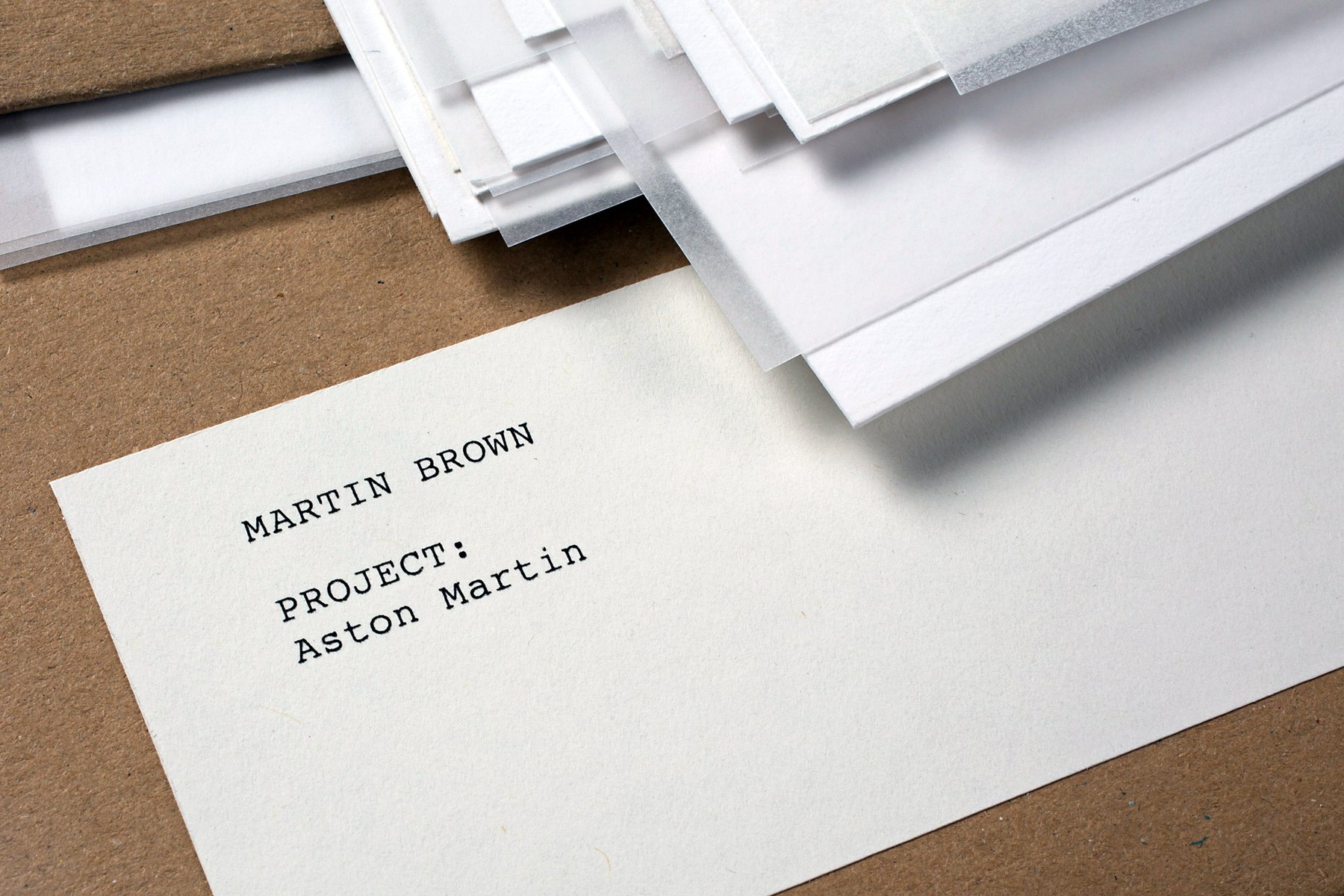
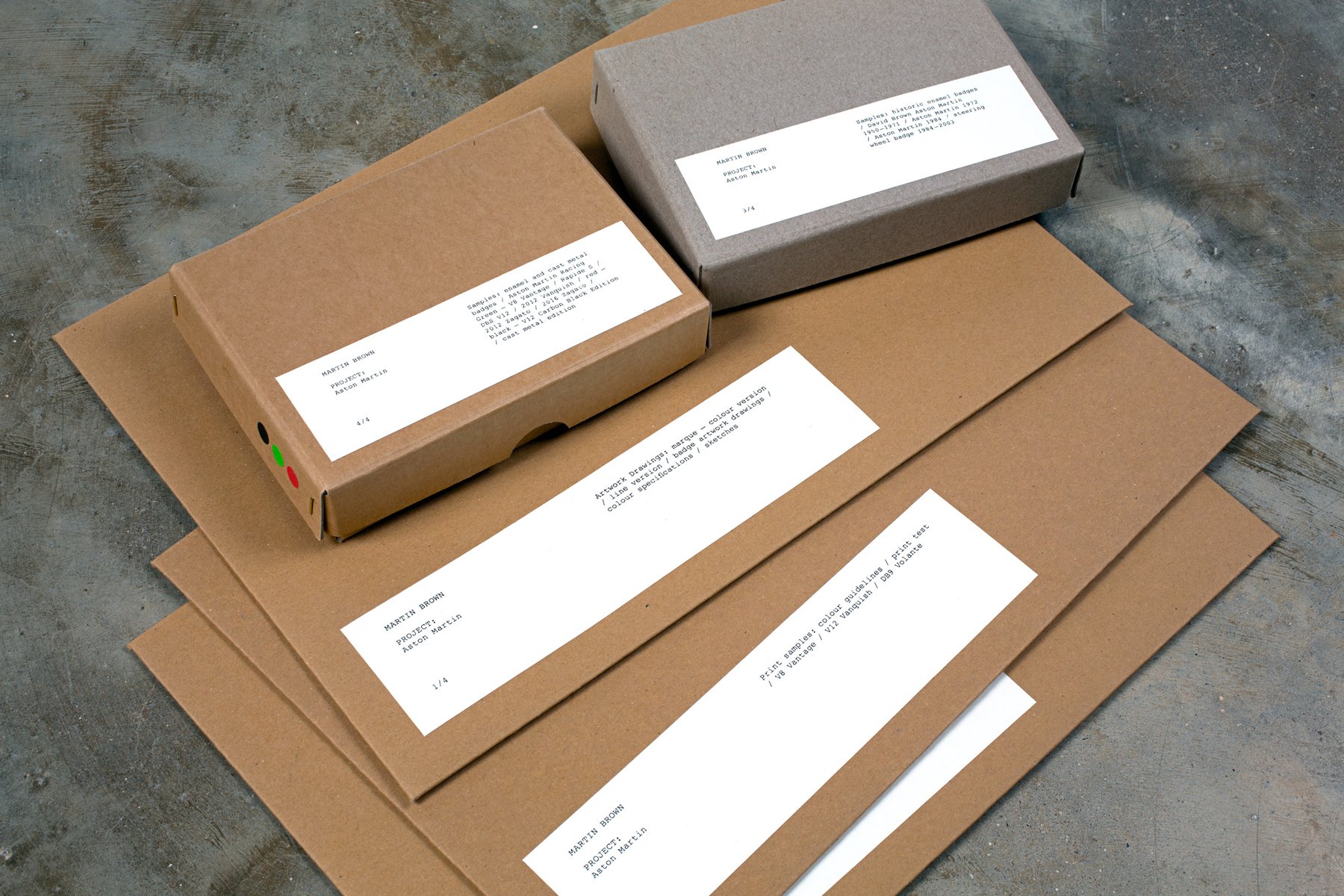
Aston Martin design archive
Original drawings, artwork, and badge samples.
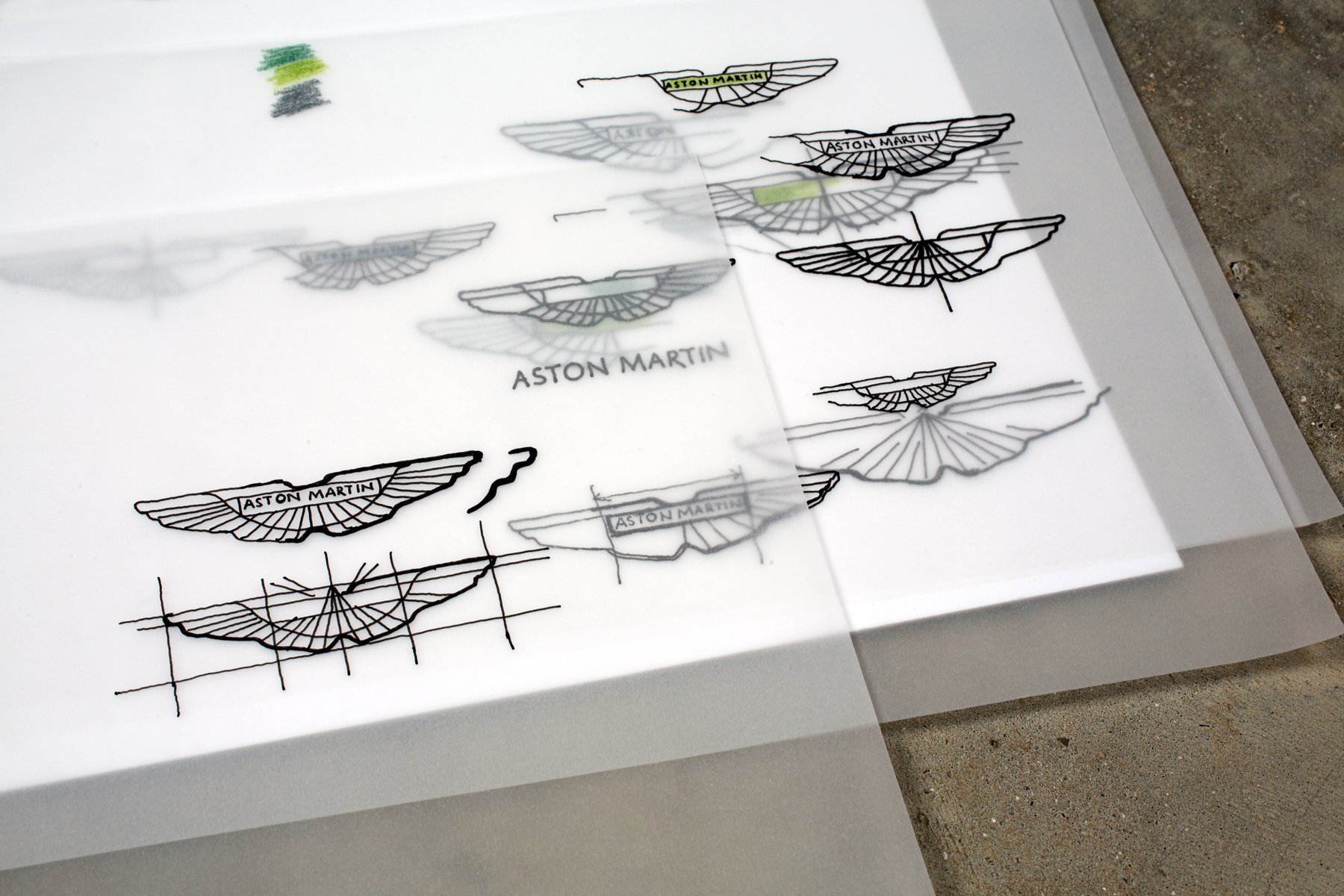
Original sketches
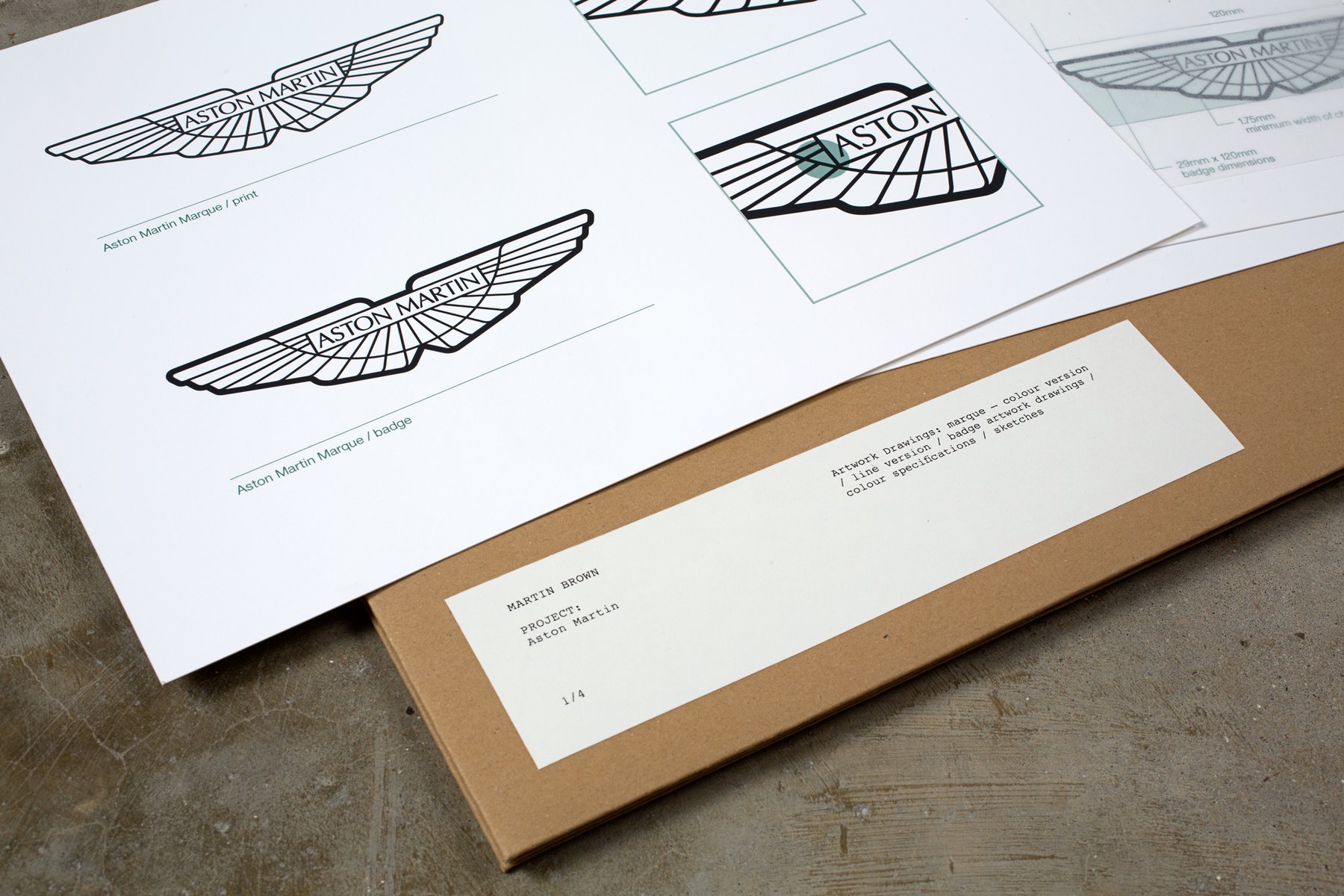
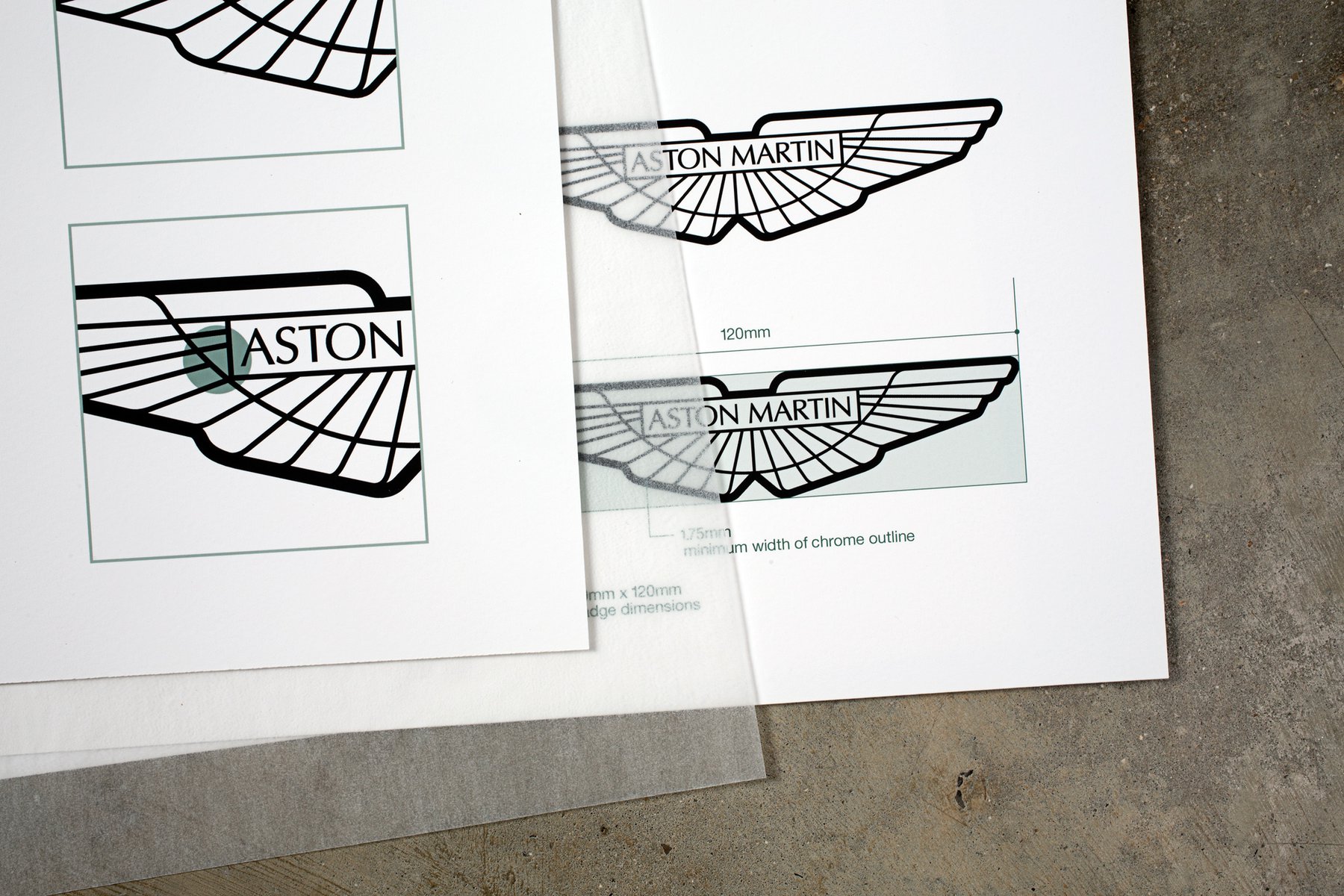
Badge artwork
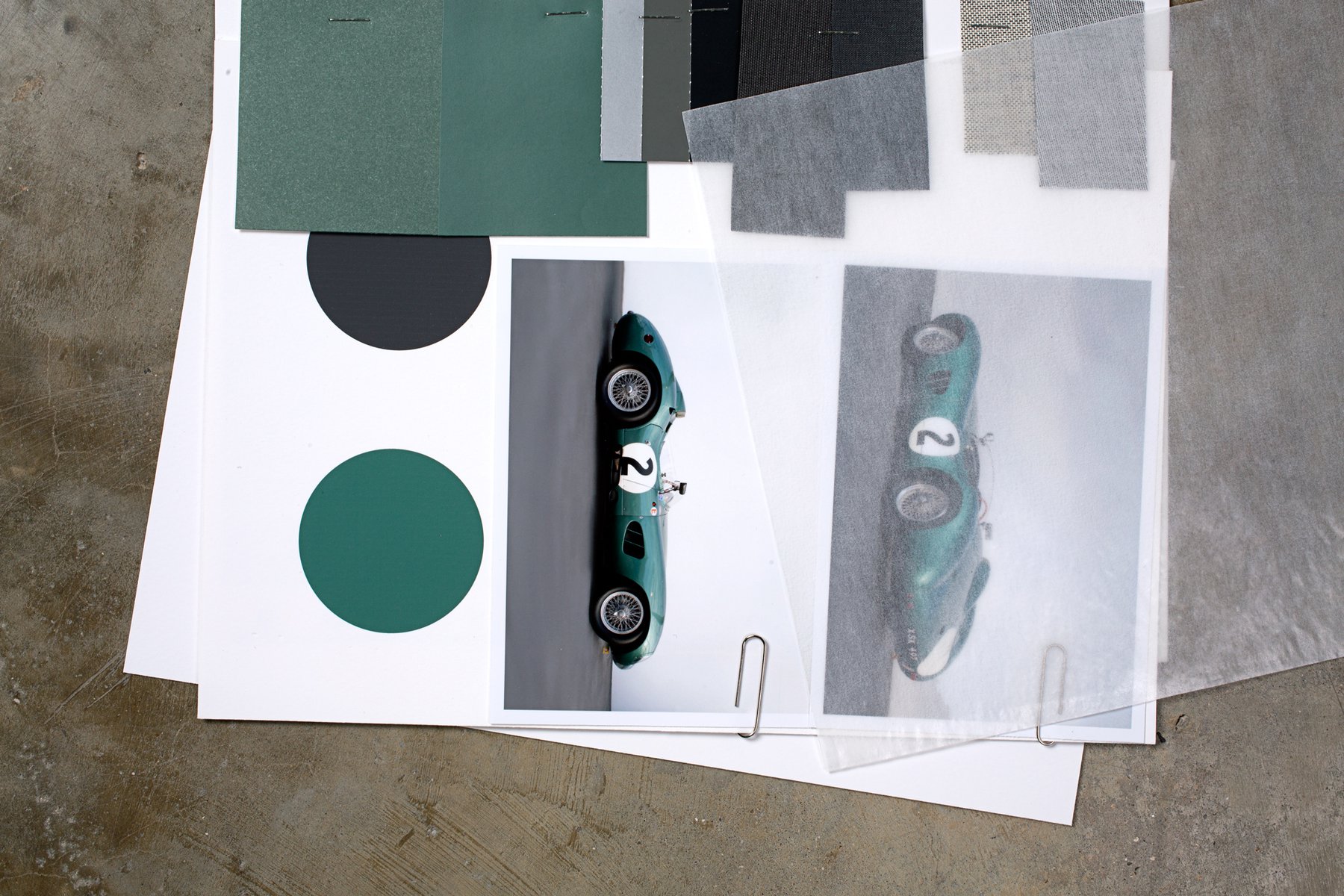
Colour
As part of the redesign, the marque was changed from British Racing Green and gold (print version at the time), to Aston Martin Racing Green and Aston Martin Gunmetal.
British Racing Green was a brand colour used variously by Jaguar, Lotus, Morgan, Mini and MG. Its heritage probably most closely associated with Jaguar cars from the 1950’s and early 1960’s.
During that same period, Aston Martin had their own unique metallic green for their race cars. The most iconic being the DBR1 that won Le Mans in 1959, but also the DBR4 (1958–1963) and DBR5 (1963–1965) Aston Martin F1 cars.
British Racing Green was a brand colour used variously by Jaguar, Lotus, Morgan, Mini and MG. Its heritage probably most closely associated with Jaguar cars from the 1950’s and early 1960’s.
During that same period, Aston Martin had their own unique metallic green for their race cars. The most iconic being the DBR1 that won Le Mans in 1959, but also the DBR4 (1958–1963) and DBR5 (1963–1965) Aston Martin F1 cars.
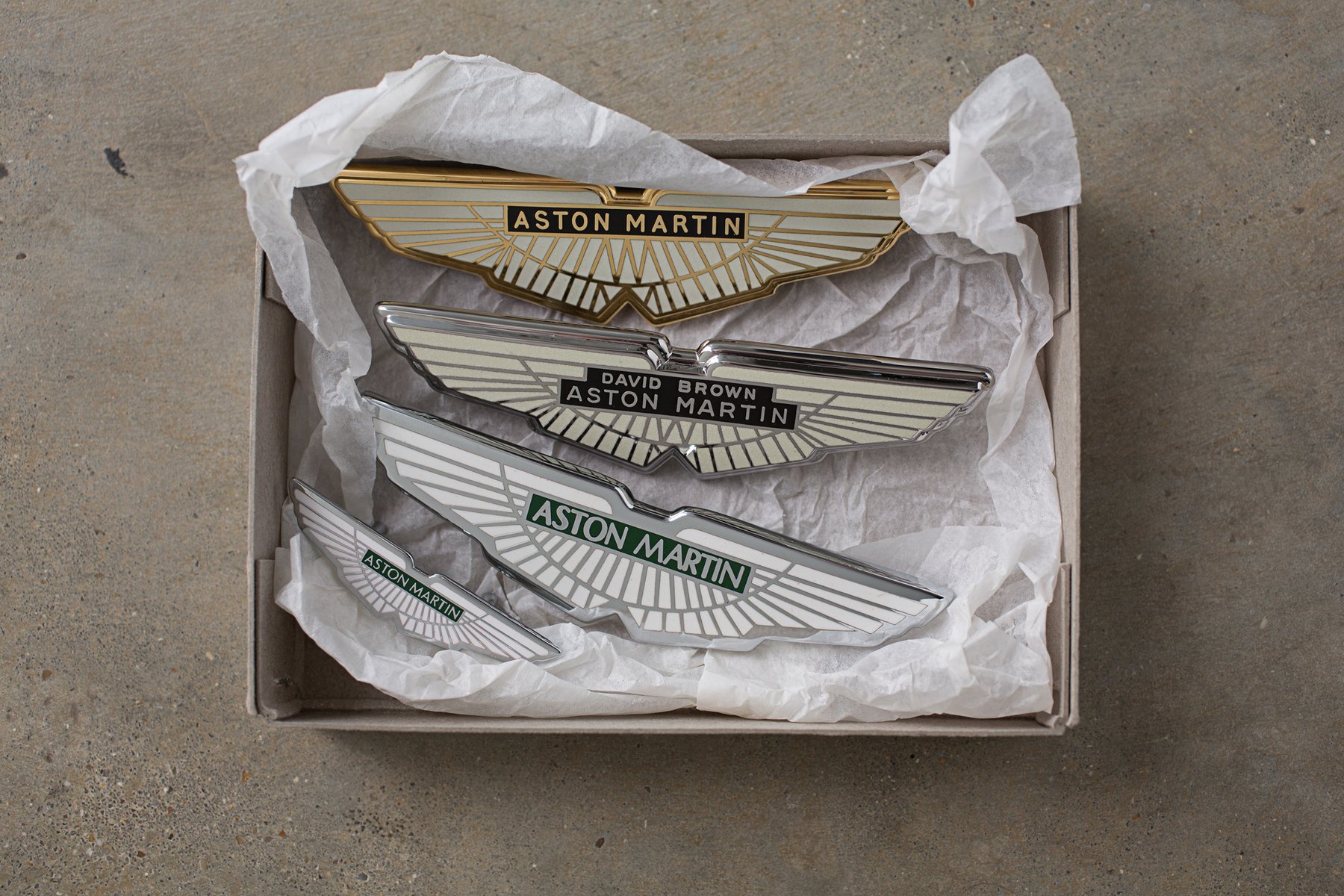
Badge archive
Various historical enamel badges, including the previous version at the bottom.

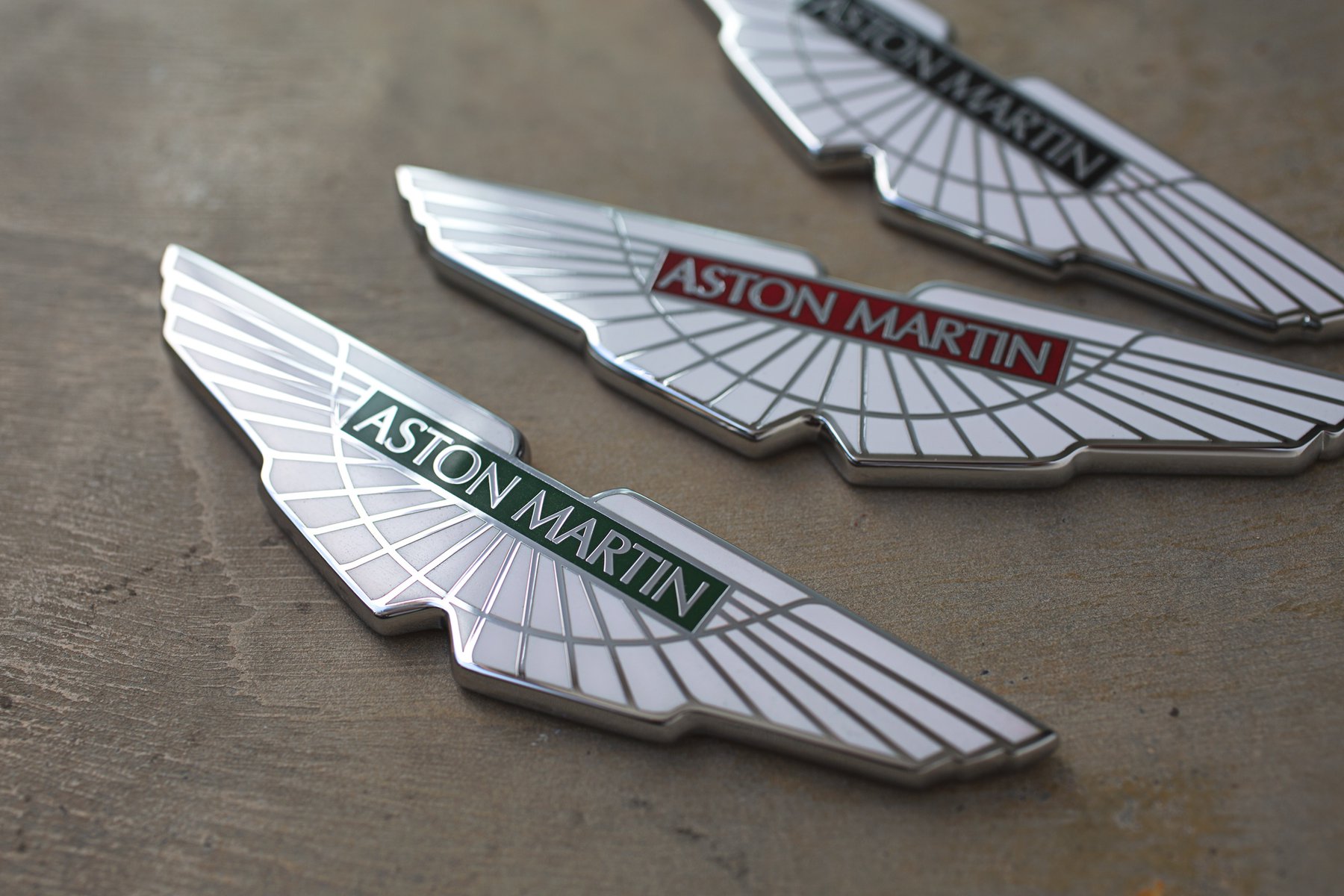
Enamel badges
In addition to the green enamel badges, there have been alternative versions produced for limited edition models. This includes a rare red enamel badge for the Zagato and V12 Zagato, and a black enamel for the V12 Carbon Black Edition DBRS.
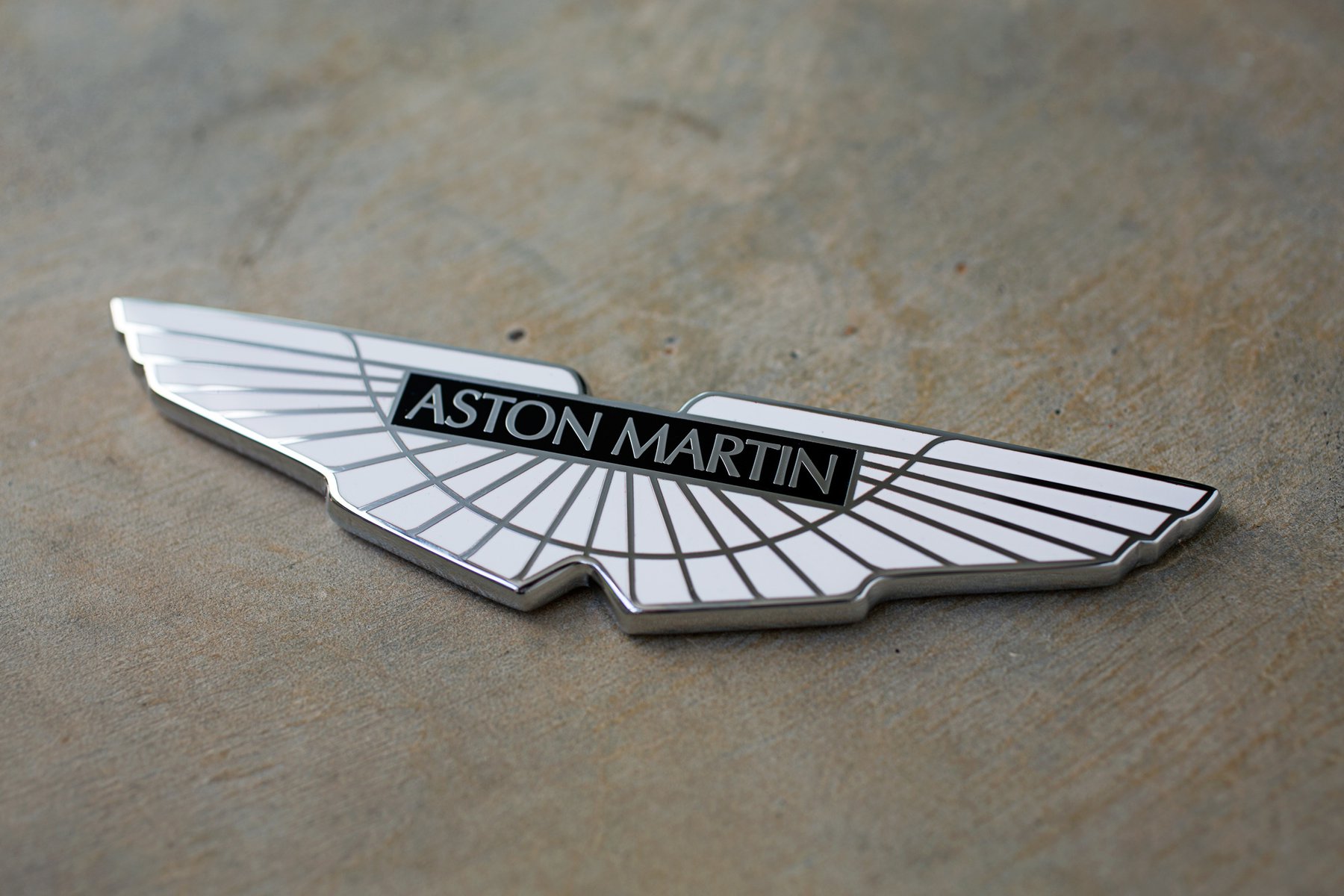
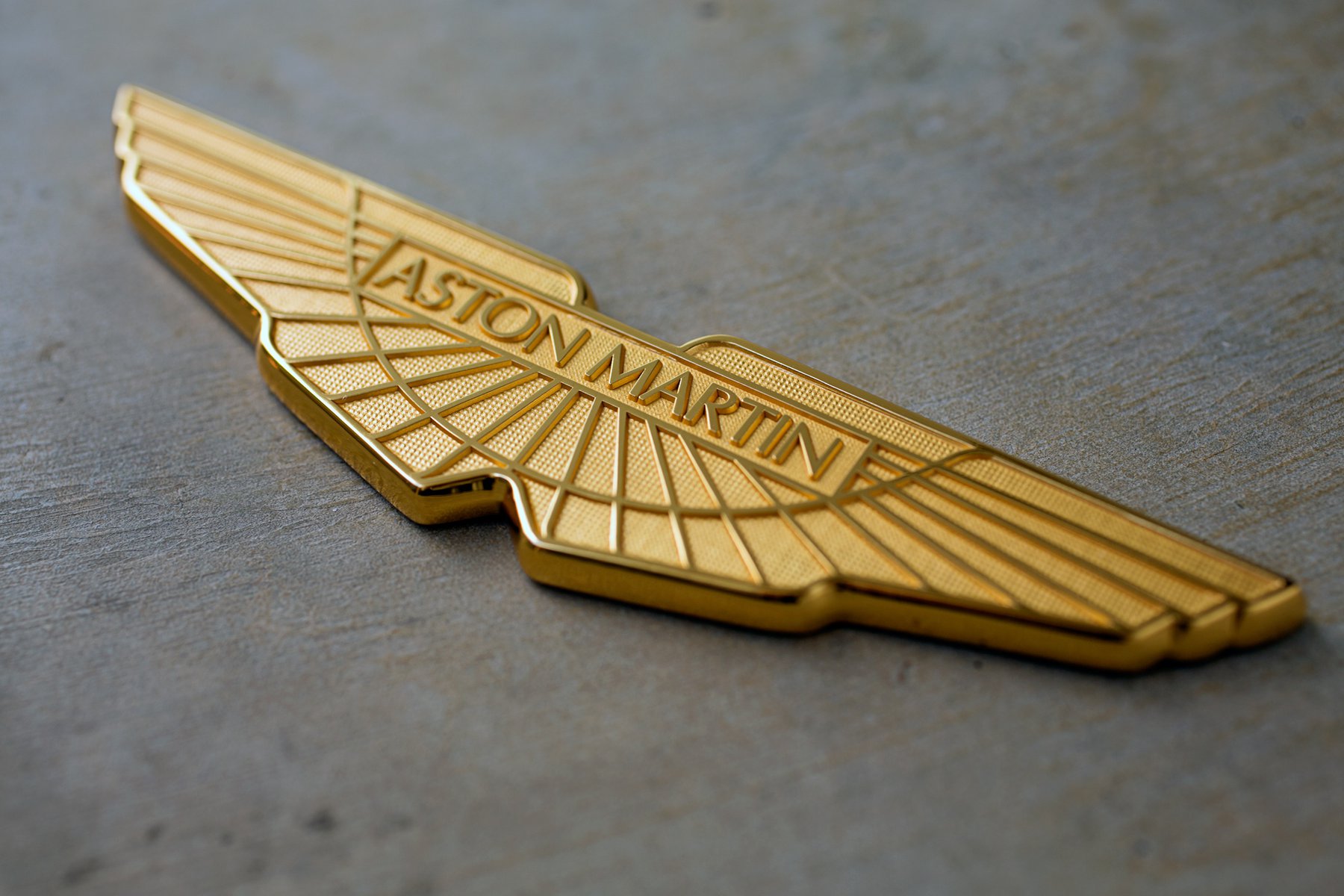
Limited edition gold plated badge
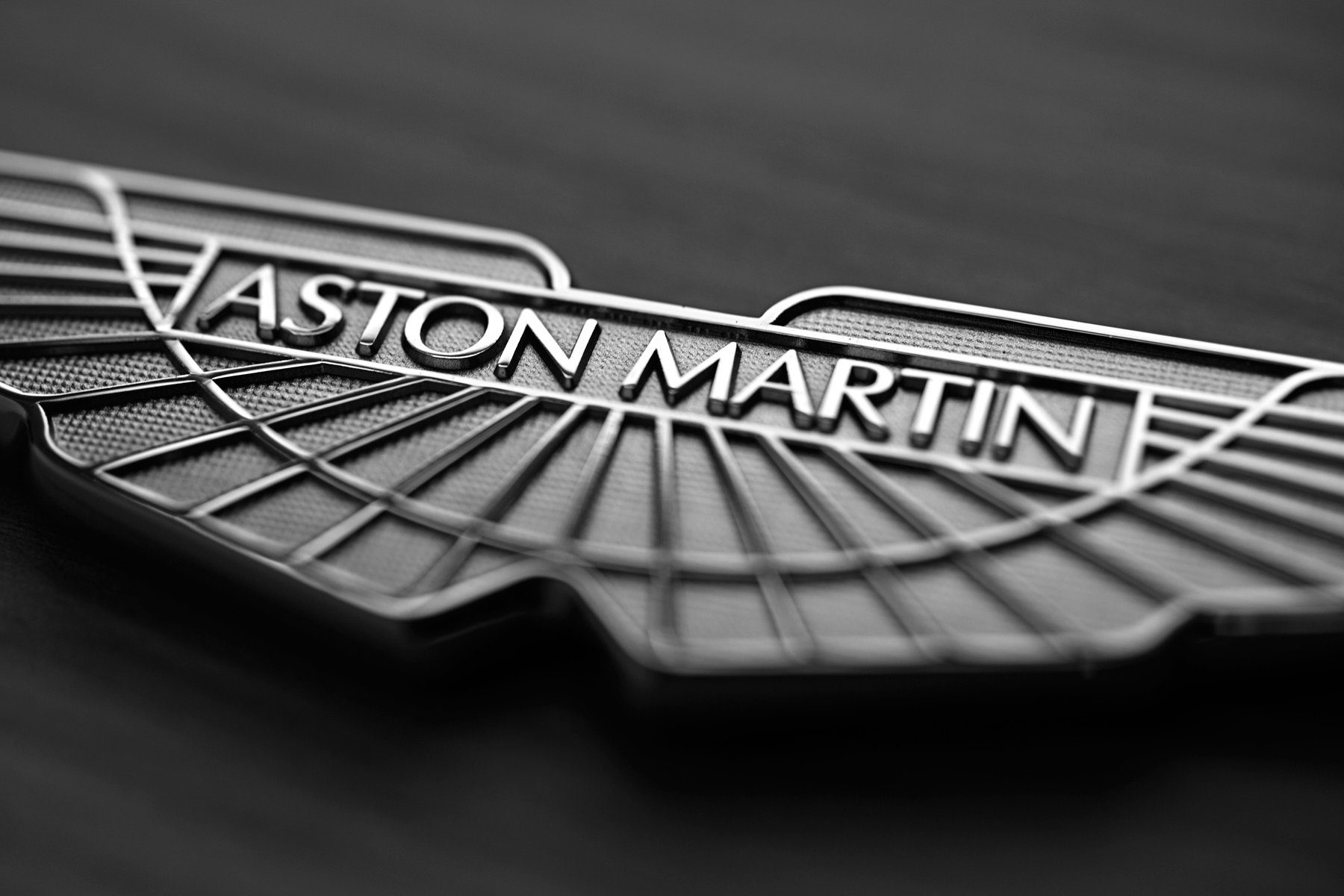
The new design for the badge led to working closely with Frattorini’s (a family business dating back to 1827, based in Birmingham’s old Jewellery Quarter). Produced in the traditional way using die stamping, furnace enamelling, chroming and hand polishing. The new badge integrated Aston Martin Racing Green as a background colour to the logotype for the first time.
Today the badges are made in the same way by Vaughtons, another Birmingham based badge and medal maker located in the same quarter. Their history dates back even further to 1819.
Design: Martin Brown
Agency: Imagination
Today the badges are made in the same way by Vaughtons, another Birmingham based badge and medal maker located in the same quarter. Their history dates back even further to 1819.
Design: Martin Brown
Agency: Imagination